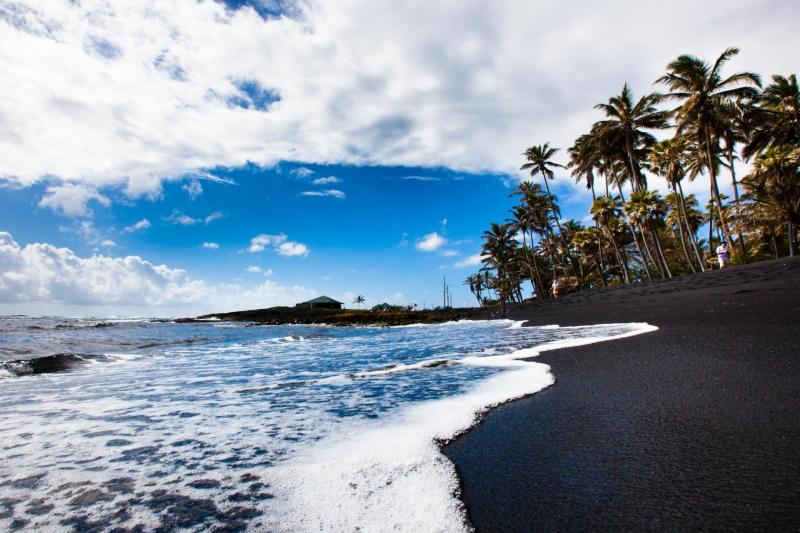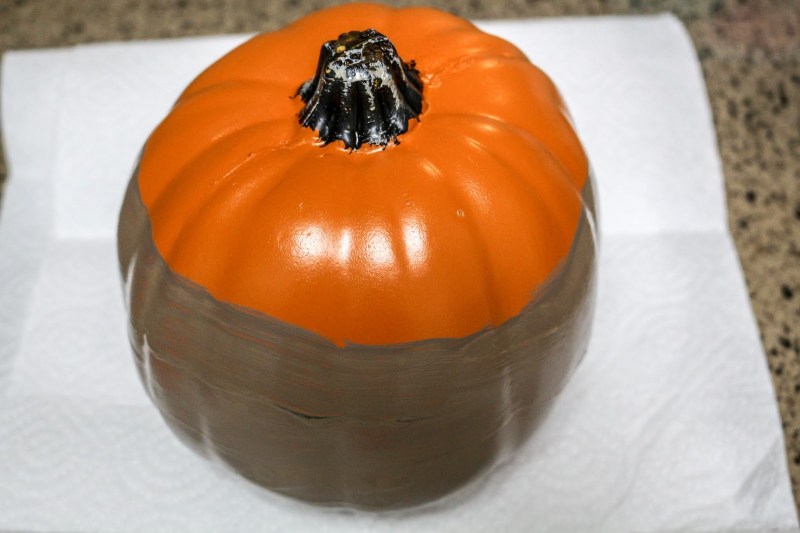Black Sand Beaches – For Maui’s black sand beach (Naupaka Beach), see Maka State Park. For the black sand beach destroyed by the eruption of Kilauea volcano, see Kaimu, Hawaii. For the community on the island of Oahu, see Punaluu, Hawaii.
This article needs additional citations for verification. Please help improve this article by adding citations to reliable sources. Unsourced material may be challenged and removed. Find sources: “Punaluʻu Beach” – News · Newspapers · Books · Scholar · JSTOR (May 2019) (Learn how and what to remove this template message)
Black Sand Beaches

Punalui Beach (also called Black Sand Beach) is a beach between Pahala and Nalehu on the Big Island of the US state of Hawaii. The beach has black sand made of basalt and formed by lava flowing into the ocean, which explodes when it reaches the ocean and cools. This volcanic activity is in Hawaii Volcanoes National Park. Punalu is frequented by endangered hawksbills and turtles, which can often be found basking on the black sand.
Most Beautiful Black Sand Beaches In The World
The swimming area is very rocky and swimming can be dangerous. The beach also has a large amount of underground fresh water flowing into it. This fresh water is very cold and is like gasoline mixed with water. According to legend, during times of drought, Hawaiians living in the area would dive underwater with a jug to get fresh water. In Hawaiian, Puna luʻu means “spring [of water] for dipping.”

The beach is located at coordinates 19°08′10″N 155°30′14″W / 19.136°N 155.504°W / 19.136; -155.504 Coordinates: 19°08′10″H 155°30′14″W / 19.136°N 155.504°W / 19.136; -155,504. Access is from Hawaii Road. take Ninol Junction Road or transfer to Sea Mountain Resort. Camping is permitted at Punaluʻu Black Sand Beach Park.
E Punaluʻu is the Hokuloa Church, Memorial Chapel, and Cemetery built near the birthplace of Hri ʻŌpūkahaʻia (1792–1818), who inspired the missionary movement that changed Hawaii forever.

Couples Session At Black Sand Beach In Iceland
There are three original harbors in the immediate vicinity of Punaluu. Fenced heiau were introduced to Hawaii around 1100, and Punaluu is one of the last places in Hawaii to enjoy an unchanged view from one character to the next.
As a fishing haven, the heiau was built on a prominent bluff overlooking the ocean to the south, the former Ninoli fish farms to the west and Koloa Bay to the east; have a supernatural ability to spread. These smooth, water-polished stones were highly desirable and were used for paving heiau, slings, and as pieces for the Hawaiian game of konane. The name Kaʻieʻi.e. considered

In good condition by the early surveyors, a few walls and a raised stone platform are all that remain of Kaʻieʻi.e. today. Rect Scholarship:
Best Black Sand Beaches In The World
Lanipau’s heiau complex was greatly affected by the construction of the Sea Mountain Resort golf course. Once the largest of the three, today what remains of Lanipau is essentially an “island” that has been swallowed up by a sea of grizzlies.

The Heiau complex, overlooking the ocean and Punaluu Beach, goes by many names, including Halelau, Kaneeleele; Mailekini or Punaluu Nui. This hiding place probably extended over the cliff edge of Punaloo Bay. Its westernmost boundary was demolished in 1906 to make way for a sugar company waterfront storage complex. Advertised as a heiau luakini (temple of human sacrifice), a large table-like stone lies outside the southernmost wall and is locally famous. as Pohaku Mohai (sacrificial stone). Preliminary site surveys indicate that kauhale (houses) may have been adjacent to heiau, which may have been the residences of na kahuna (religious specialists).
Another important cultural feature is the Ala Kahakai (Sea Path), which serves as an important link between ritual centers and coastal communities. Ala Kahakai thought

Punaluu Black Sand Beach Information, Photos & More
Would have been the original route of the god Lono from North Kohala to the southernmost tip of the island and along the Kau coast to Puna. This trail, once paved with na ʻiliʻili hanau, was designated a National Historic Trail in 2000 and remains can be found at both Punalu Nui and Kaʻieʻi.e. hello
Kiʻi pohaku (petroglyphs) can be found near the County Park pavilions in a protected area surrounded by a rock wall just past the parking lot. It’s easy to miss these “unmarked” old engravings.

Rare and endangered native animals known in Punaluu and Ninol include honu ea (dark turtle), honu (old turtle), Hawaiian monk seal, native bees, orange-black testes and other aquatic life. : Native birds are found near the shore and cliffs or fly over the area on their way to the sea from high-altitude nesting colonies, including the endangered Hawaiian hawk (ʻio), which nests in the trees of Punaluu. Spinner dolphins and humpback whales can also be seen offshore from Punaloo. Residents say that such scenes are frequent. 2006 A rare Hawaiian monk seal was spotted near the Punaluu boat ramp in September, and nesting sites for endangered hawksbill turtles are located along Punaluu and Ninole. Such phenomena indicate that a healthy virus has sufficient resources to support large marine animals.
Black Sands Beach Is A Unique Beach In Northern California
The hawksbill turtle or honu’ea (Eretmochelys imbricata) is a federally threatened species and is the rarest sea turtle in the Pacific Ocean. Researchers estimate that there are fewer than 80 nesting turtles in the Hawaiian Islands, with 67 nesting on Hawaii Island. More than half of the state’s known breeding population, 40 individuals, nest along the southeastern border of Hawaii Volcanoes National Park near Waiakapuna.

The endangered gre or honu turtle (Chelonia mydas) feeds on marine plants in shallow coastal waters such as Punaluu. Red seaweed, the turtles’ favorite food, thrives on the coral-studded rocks in the bay’s shallow waters, and turtles can be found on the black sand beach despite the beachgoers. National Marine Fisheries researchers have been studying the turtle along with groups of hatchlings since 1982. Visitors must stay 20 feet (6.1 m) from the turtles at all times.
The endangered Hawaiian bat, opeʻapeʻa (Lasirus cinereus semotus), is known to fly and inhabit Punalu. Their habitat extends from sea level to 13,000 feet. It usually weighs about 5 to 8 ounces, is nocturnal, and feeds on insects. Relatively little research has been done on this Hawaiian bat, and data on its habitat and population status are very limited.

Top 5 Black Sand Beaches In Iceland
One of the largest populations of the rare orange-black species (Megalagrion xanthomelas) is found in Ninol. It is an endangered species and thrives in aquatic habitats that extend from the Ninolian Springs to the Honuapo Estuary. Systematic surveys have identified populations from Kawa’a, Hilea, Ninole and Honuapo. The highest doses occur in the back of the estuarine marsh, at the mouth of Hilea and Ninole creeks, and at Kawaa springs.
Native plant communities actually appear as a narrow strip of vegetation, mainly a variety of shrubs, vines, grasses, scattered trees and herbs. The diverse habitats of pāhoehoe (flat, hard lava) and ʻaʻā, sand, anchial lake shores, sheltered beaches, and bluffs battered by sea spray, each with distinct native plant communities. Four riparian plant species (six trees, black ground cover or shrub forms, and invasive water hyacinth) were identified during the reconnaissance survey. Native plants such as ilima (Sida fallax), naupaka kahakai (Scaevola taccada) and pōhuehue (Ipomoea pes-caprae brasilisis) are found in the area.

The second largest spring complex on Hawaii Island is located at Punalu and Ninol Cove. Stretching from Punaluu to Ninole Springs, from Kauai to Honupo, there is a series of wetlands fed by headwaters and intermittent streams that support a wide variety of native fauna. These spring and pool complexes contain few individuals of marine invertebrates and fish, especially juveniles or recruits, suggesting that this may be an important refuge or breeding area for coastal marine fauna on the south coast of Hawai’i Island.
Reservations At Black Sand Beach, Maui
Various types of angialine pools are found in and around Punaloo Bay and Ninool. These pools are rare and localized brines along coastal lava flows that exhibit tidal fluctuations unrelated to sea surface. These include working near-shore pools as well as undisturbed pools in collapsed lava tubes, fissures and caves. Endemic and local species of shrimp live in pools and travel through them and through underground crevices. The orange-black ladybug (Megalagrion xanthomelas) breeds in the angialine pools while native insects roost on nearby vegetation. Statewide, angiosperm species are highly threatened by kelp insects, habitat loss due to coastal development, and other human impacts.

Anchial lakes are among Hawaii’s most threatened ecosystems. Anchial basins are landlocked saline lakes located along the coast, connected to the ocean by tunnels. These rare and fragile lakes, characterized by tidal fluctuations, are home to unusual plants and animals.
This settlement exists in the United States
Black Sand Beaches
Black sand beaches santorini, beaches with black sand, black sand beaches in florida, grenada black sand beaches, what beaches have black sand, places with black sand beaches, black sand beaches hawaii, st lucia black sand beaches, best black sand beaches, guatemala black sand beaches, tahiti black sand beaches, sand beaches


